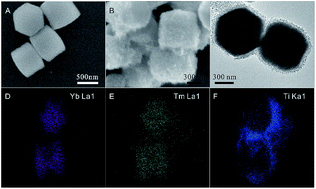NaYF4:Yb,Tm@TiO2 core@shell structures for optimal photocatalytic degradation of ciprofloxacin in the aquatic environment†
Abstract
The removal of antibiotic residues in the aquatic environment is still a big challenge in environmental protection. Here, we developed NaYF4:Yb,Tm@TiO2 as a highly efficient photocatalyst for photocatalytic degradation of ciprofloxacin (CIP), a representative antibiotic in water under simulated solar irradiation. NaYF4:Yb,Tm@TiO2 can efficiently utilize a broad spectrum of solar energy to improve the efficiency of ciprofloxacin removal from an aquatic environment. The optimum operation conditions of photocatalyst dosage, pH value, and initial concentrations of CIP were determined by a series of contrast experiments. The dynamic process of CIP removal was monitored by UV-vis spectrophotometry, and can be well predicted by a pseudo first order model. The optimal conditions of photocatalyst dosage, initial concentration of CIP and pH value for CIP photocatalytic degradation were 1 g L−1, 10−5 M and 8, respectively. This study provides an efficient method for antibiotic removal and enables a promising strategy for other organic water pollutant treatments.



 Please wait while we load your content...
Please wait while we load your content...